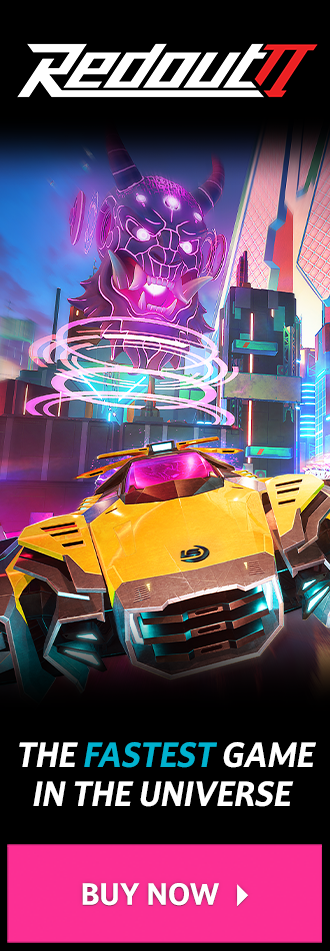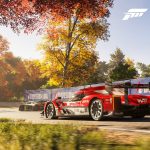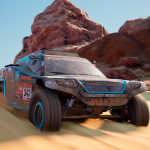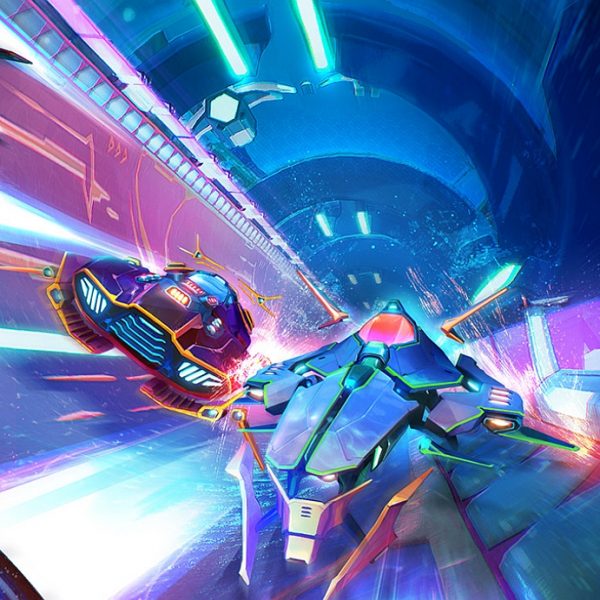Released back in 2014, The Crew was an admirably ambitious open-world racer by French developer Ivory Tower, a newly-formed studio comprising of former Eden Games developers responsible for the fabled Test Drive Unlimited series. Set in a sprawling open world representing the entire United States of America, it was a commendable first effort that fell short of its potential thanks to rubber-banding AI, subpar vehicle handling, and a forgettable Fast & Furious-style storyline.
For the sequel, Ivory Tower has thankfully scrapped the shoehorned revenge story and taken the series in a more lighthearted direction. You now play as an unknown rookie racer trying to make a name for yourself in Motornation, a nationwide racing festival encompassing multiple disciplines. Every discipline is divided into one of four families: Street Racing, Off-Road, Freestyle, and Pro Racing. Drawing parallels with the real world, your popularity and progress is dictated by the number of social media followers you accumulate. Completing events and performing crowd-pleasing stunts rewards you with new followers, unlocking new disciplines and events to complete.
It’s a more traditional structure and a welcome change in tone, even if it tries too hard to emulate Forza Horizon at times. With its more upbeat story, The Crew 2 takes itself far less seriously and fully embraces its lunacy. But while there’s less focus on the story, cutscenes are plagued with some truly terrible voice acting and dreadful dialogue.
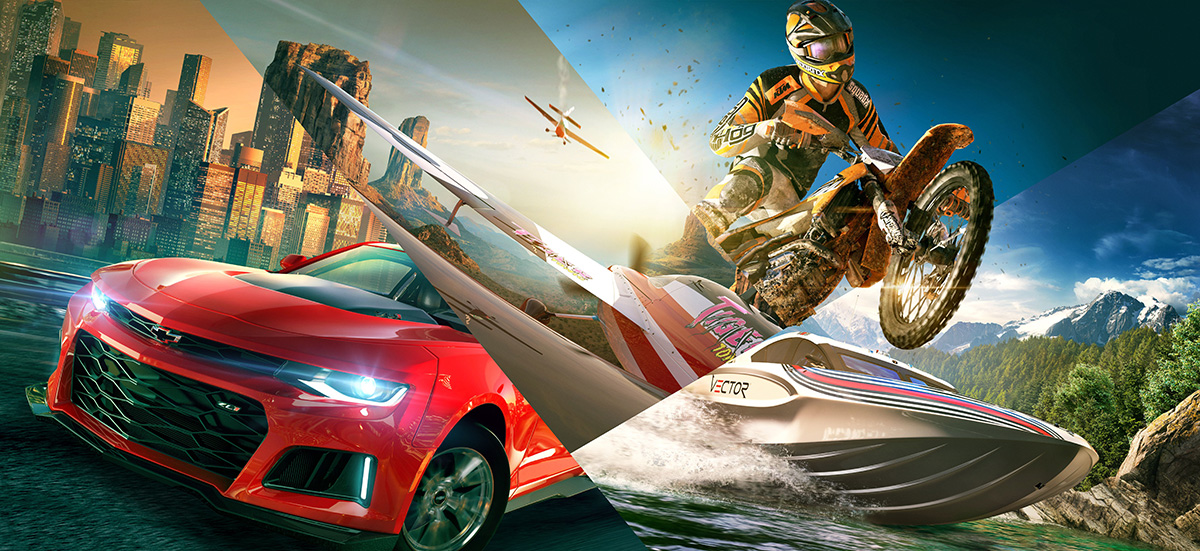
One particularly groan-inducing line from the opening cutscene sets the tone: “I don’t want your best, I want legendary badassdom,” the organiser instructs you in the game’s Inception-inspired opening sequence that sees the city visually morph as you’re introduced to each racing family. The cringe-worthy social media chatter occurs in every cutscene and will have you reaching for the skip button. Annoyingly, some of the characters interrupt you in-game and can’t be skipped.
On the road again
Like the first game, The Crew 2 takes place in a gigantic open world based in a heavily condensed version of the United States of America. It’s not an exact 1:1 recreation, but Ivory Tower has captured the character of every state, from the towering skyscrapers of New York to the beaches of Miami and the neon-lit Las Vegas strip. The freedom is liberating at first: it takes roughly one hour to drive from coast to coast, creating an impressive sense of scale no other racing game can match.
While it’s fun to cruise around and take in the sights, there’s surprisingly little incentive to explore The Crew 2’s massive map. Once the novelty of exploring the map wears off, you’ll often find yourself driving aimlessly in between main events searching for something to do. Bigger isn’t necessarily better, as routes between major cities often feature barren stretches of roads with repeated sections.
There are also are side activities to complete outside of main events such as speed traps and photo opportunities (as a side note, the improved photo mode is excellent, with options to change the time of day and add weather effects, while creative content creators will love the new replay editor), but they’re far too spread out. It’s a stark contrast to Forza Horizon 3 and Burnout Paradise Remastered, where new events, secret locations, and hidden cars are scattered liberally throughout the map – there’s something new to discover on practically every stretch of road. In contrast, The Crew 2’s map is bewilderingly barren.

In the first game, events unlocked after you discovered them, but everything is now accessible in the main menu right from the start in The Crew 2. This is obviously convenient for time-strapped players, but exploration no longer gives you any sense of accomplishment. Oddly, there’s no option to fast travel to any point in the map like in the first game, either.
The shift from illegal street racing to closed courses has enabled Ivory Tower to create more memorable curated race events that have you jumping off ramps, leaping across rooftops and crash landing off multi-story car parks, rather than on a seemingly random stretch of road like before. A 40-minute Cannonball Run-style race in a hypercar from New York to San Francisco is a clear highlight, but extended cross-country events that fully utilise the massive map are surprisingly scarce. While the races have more spectacle, the lack of crowds diminishes the atmosphere.
Races are fun and thrilling at first, but they’re ruined by infuriating AI. The original game was plagued with rubber-banding opponents, and unfortunately, they make a very unwelcome return in The Crew 2. It’s possible to gain a significant lead, use shortcuts, and drive cleanly, only for the opponents to miraculously catch up, overtake you and take the lead moments before the finish line. It’s enough to make you want to crush your controller in frustration after an extended 20 or 40-minute race. Such blatant rubber banding has no place in a modern racing game and doesn’t reward skilful driving.
On a technical level, the scale of The Crew 2’s open world is staggering, but there’s a feeling of familiarity that’s difficult to shake off if you poured many hours into the original game. As impressive as the U.S. map still is, it’s barely changed since the first game.
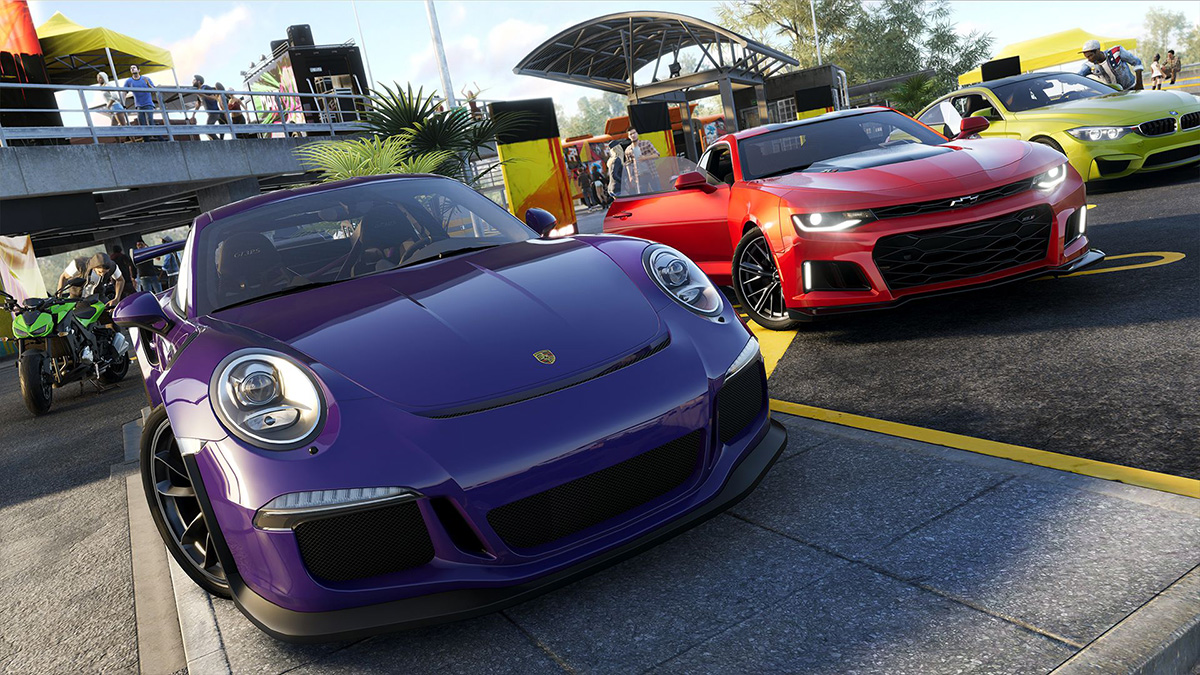
At times, The Crew 2 looks graphically stunning, with detailed car models, a rich variety of vegetation, and more realistic lighting effects. Visually, it’s a huge step up from the original game’s underwhelming graphics, particularly before the Wild Run update. That said, environment textures look flat and lack detail when scrutinised up close. Texture pop-in is also noticeable, but these blemishes are easily forgivable considering the enormous size of the map. The draw distance is also jaw-dropping on Xbox One X and there are no noticeable frame rate drops on Microsoft’s flagship console, which is an impressive feat.
Watching the live map render in real time when zooming out before revealing the entire country is an outstanding technical achievement on consoles. Thre’s some seriously impressive tech powering The Crew 2’s engine – it could even be an evolution of Driver: San Francisco’s scalable map.
Boats, planes and automobiles
This isn’t the only mechanic seemingly inspired by Ubisoft Reflection’s underrated open-world driving game, either. Driver: San Francisco was praised for its innovative “Shift” mechanic that let you switch between any moving car instantaneously. Taking this to the next level, The Crew 2’s new “Fast Fav” feature allows you to seamlessly switch between an allocated car, boat or plane on the fly, offering a Sonic & All Stars Racing Transformed-style experience with licensed vehicles.
This results in some unique gameplay scenarios: one minute you’re hurtling down a busy LA freeway, the next you’re riding the waves in a powerboat before gliding through the Golden Gate Bridge in a low-flying plane. You can even switch into a car while in the air, resulting in you plummeting back to earth for several minutes. It’s a genuinely innovative mechanic that’s fun to experiment with, but The Crew 2 rarely utilises it in races apart from a few scripted moments in special “Xtrem” events.
These are often the highlights of The Crew 2’s otherwise uninspiring campaign, with one particularly memorable race culminating in a nerve-racking race up a snow-covered Grand Canyon that leaves little margin for error. But what could have been a game-changing, fully fleshed out mechanic ends up being a throwaway feature some players will never even use in free roam.
With hundreds of main events to complete, there’s no shortage of content in the campaign, with an impressive variety of vehicle disciplines almost comparable to Project CARS 2. Petrolheads will find a well-curated selection of muscle cars, sports cars, and hypercars, from the new Ford Mustang to the Ferrari 488 Speciale, but there aren’t many surprises in The Crew 2’s car roster. Vehicle handling varies between different disciplines, as some are more satisfying to drive than others. Street racing cars are grippy, while drift cars are extremely loose and tail-happy. Track cars, on the other hand, feel tight but aren’t very fun to drive, and bikes feel far too rigid.
Off-road fans are also well catered for. The selection of SUVs and pickup trucks include the racing game debut of the luxurious Mercedes X-Class. Rally Raid events have you tackling tricky terrain against the clock or an opponent, and there are even Rallycross events. These suit The Crew 2’s approachable arcade-style driving but are let down by poorly implemented Joker laps. In real life, drivers must take the Joker lap in a separate section of track once every race. In The Crew 2, the AI use Joker laps as a shortcut advantage every race, and you aren’t penalised if you don’t take them. Of course, The Crew 2 isn’t supposed to be a realistic representation of real-life racing, but why have Joker laps at all if they aren’t used correctly?
Being a game that doesn’t take itself too seriously, The Crew 2’s vehicle handling is very forgiving, accessible, and fun, but still feels distinct. By default, the controls are perhaps too neutered, however, to the point that drift events require hardly any skill since the game practically counter steers for you whenever the car starts sliding. Delve into the options, and more experienced players will find a plethora of settings to adjust the ABS, traction control, and slide help among other assists, unlocking a hidden layer of depth for a more challenging and rewarding drive.
While the driving is a definite improvement over the last game, the jump and collision physics leave a lot to be desired. There seems to be a very strong gravitational pull in the game’s world. This was likely implemented to prevent cars from rolling over, but watching cars get violently sucked back into the ground when airborne looks unnatural. It’s a similar story for the collision physics, as cars bounce off objects and traffic vehicles as if they’re made of rubber.

The cars must be made of sturdy stuff too as they can withstand collisions with barely a scratch. Granted, the damage modelling in the first game wasn’t exactly extensive, but the cars still deformed. In The Crew 2, high-speed impacts leave your car looking pristine aside from a few minor paint scratches. Other games with licensed cars like Forza Horizon have much more realistic damage modelling, so there’s really no excuse.
Rapid racer
As for the boats and planes, they’re fun diversions, but you can Ivory Tower has more experience developing land-based racing games. Powerboat races are decidedly dull due to a lackluster sense of speed, though the faster jet sprint boats that unlock later are more exciting to drive, if a tad too twitchy. There are at least a few memorable setpieces that spice things up – no other game lets you jump a speedboat off the Hoover Dam. Considering this isn’t a dedicated boat racing game, the water physics and visuals are also very impressive.
It’s also fun to take to the skies in a stunt plane. They’re very easy to get to grips with thanks to their responsive handling, but the lack of skill required makes for some unsatisfying flying. Aerobatic events also suffer from repetition – there’s only so many times you can perform the same rolls, loop and drift stunts on demand before it soon gets repetitive. Frustratingly, air loops often don’t register, wasting precious time when you’re trying to hit the target score under the clock.
One of the original game’s most unique attributes was the ability to upgrade your car’s spec. This made it the Pokemon of car games, and it was fun to watch your car evolve from a street racer, to an off-roader, and, eventually, a thoroughbred track car. Sadly, this system has been scrapped in the sequel. While some cars are available in multiple specs (some are available as Street, Drag and Drift specs, for example), they can only be bought separately now.
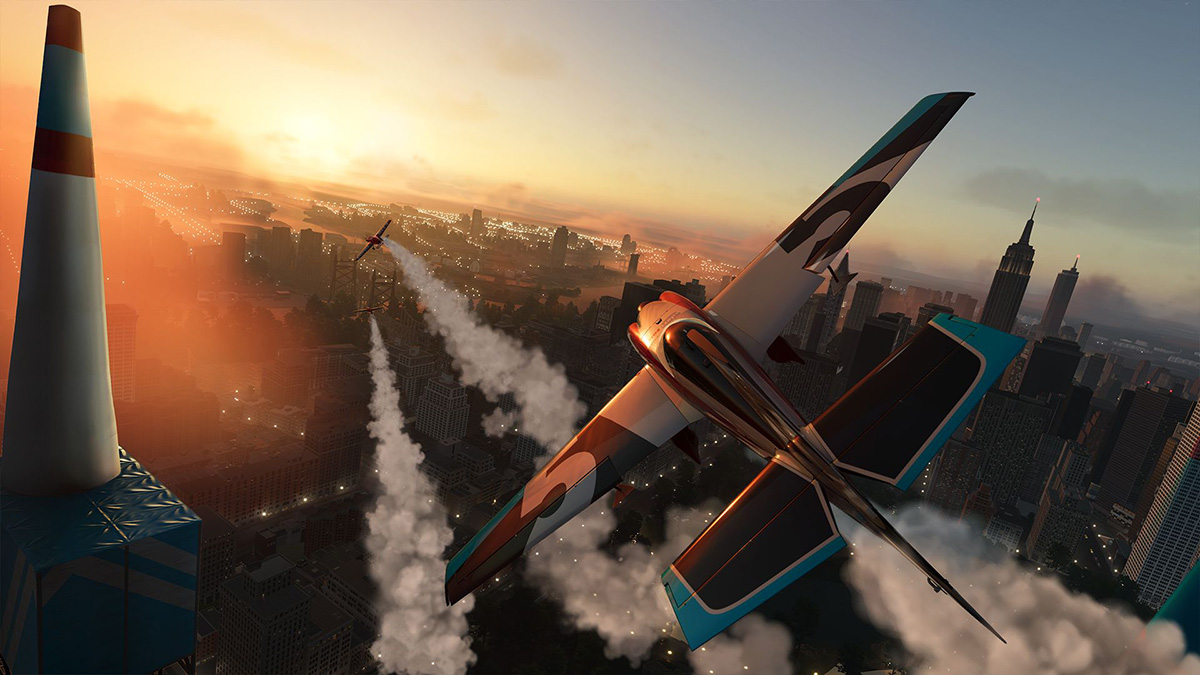
This wouldn’t be an issue if the pricing system wasn’t so geared towards micro-transactions. The cost of most cars is extortionate, requiring many hours of grinding to earn enough in-game credits. You can, however, bypass this altogether by entering your credit card details and purchasing “Crew Credits.”
While you can tackle each discipline in any order you desire, later events require you to buy a specific vehicle to enter if you want to progress. This encourages you to try all the different vehicle disciplines, and micro-transactions are still completely optional of course, but even just buying one car will often deplete most of your funds.
Vehicle pricing is also wildly inconsistent – a Red Bull Formula One car costs several hundred-thousand less in-game credits than a Lamborghini Aventador road car. Lowering the pricing would increase the fun factor by allowing players to experiment with more vehicles, as would offering more free prize cars as rewards.
As part of The Crew 2’s RPG system, cars can be upgraded via loot upgrades. These can either be found in locations around the map, or as rewards after completing an event. Equipping part upgrades improves your car’s overall performance level to make it more competitive, but it isn’t very engaging: all you do is scroll through each component and equip the unlocked loot upgrade with the highest level. However, in a baffling design decision these upgrades can’t be automatically equipped. This often disrupts the flow of the game as you constantly have to pause the action and sift through menus, which feels like a chore.
Fortunately, there is a more extensive Need For Speed-style customisation system that lets you buy new parts such as spoilers, bonnets, and bumpers, as well as create custom liveries using the new livery editor, which is a welcome addition.
Disconnected
As a solo experience, The Crew 2 isn’t very engaging. Ivory Tower’s open-world racer is clearly designed to be played online with other players. Unfortunately, this aspect also feels underdeveloped. Unlike Forza Horizon 4, The Crew 2 can only be played with an internet connection, but it never justifies this requirement. Frustratingly, this means the game is completely inaccessible if the servers go down. Being booted back to the title screen because the server disconnected isn’t fun, but thankfully this hasn’t happened yet since the game’s launch. Still, you can at least pause the game this time.
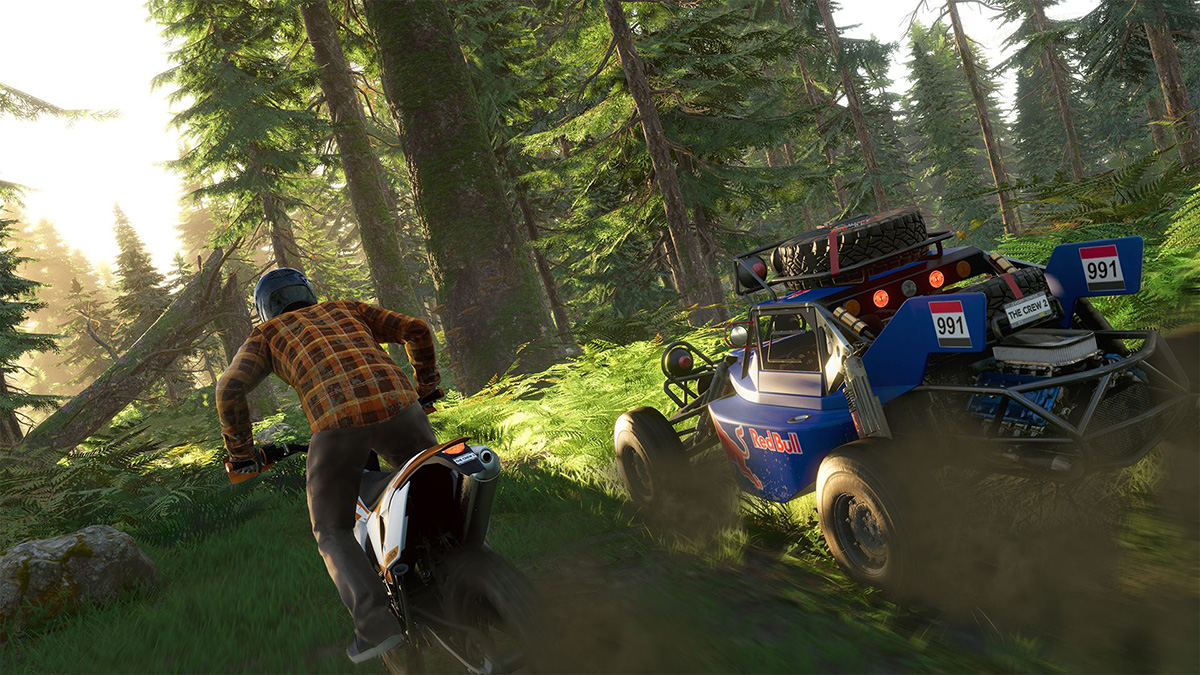
Up to seven other players can populate the map in a single session, which is nowhere near enough considering the size of the map, so encounters with other players is rare. And if you do find another player, you can’t interact with them in any meaningful way like, say, challenge them to a race. Inevitably, most play sessions consist of other drivers honking their horn at you like a lunatic and incessantly ramming into you to gain your attention.
But while you can play solo events cooperatively with other online players to increase your chances of winning (events are won automatically if another player in your crew finishes first), there is no competitive online multiplayer in The Crew 2 whatsoever at the time of writing. For a multiplayer focused game that forces you to have an online connection to play, this is an unforgivable omission – particularly when the first game had PVP events at launch. Ultimately, with no way of creating custom races, The Crew 2’s massive open world feels completely underutilised.
Ivory Tower has confirmed PVP will be added to The Crew 2 in December, but there’s a danger the game’s player base will have dramatically decreased by then – Forza Horizon 4 will have been out for several months at this point, potentially leaving only The Crew 2’s most dedicated players on Xbox One and PC.
The only consolation is that Ivory Tower’s post-release plans sound promising. Free cars will be added every month making the season pass somewhat redundant unless you’re desperate to access extra content early, and new disciplines are also in the pipeline including hovercrafts. The original game was dramatically improved a year after its initial release and even had a radical graphical makeover. If Ivory Tower’s exemplary post-release support is anything to go by, the same will likely happen with The Crew 2.
Overall, The Crew 2 is an incredible technical achievement but some questionable design decisions let the game down. The visuals and vehicle handling are vastly improved, the scale and diversity of the open world recreation of the United States is still impressive, and the ability to switch between cars, boats and planes on the fly is a fun and innovative novelty. Unfortunately, The Crew 2 fails to fully utilise its best assets: the gargantuan map is barren, lifeless and doesn’t have enough activities to engage you outside main events, while the much-touted vehicle-switching mechanic is rarely used in the campaign and the novelty wears off fast in free roam.
In the end, this leaves you with a repetitive, unengaging campaign featuring some of the worst rubber-banding AI in a modern racing game and shallow social media-savvy characters with bad voice acting, and a limited online multiplayer. As a result, The Crew 2 falls short of its massive potential. However, if the first game is anything to go by Ivory Tower’s open-world playground should be worth revisiting in a few months after numerous updates have deployed – but by then, many players will have probably flocked to Forza Horizon 4.
Our Review
The good
- Massive open world
- Impressive graphics considering the size of the map
- Boats and planes add to the vehicle variety
- Innovative Fast Fav feature lets you switch between vehicles on the fly
The bad
- The world is big but barren with no incentive to explore
- Social media-obsessed characters quickly become grating
- Infuriating rubber-band AI ruins races
- No PVP online multiplayer at launch
Summary
Like the first game, The Crew 2 falls short of its massive potential. The dull,, unengaging campaign features some of the worst rubber-banding AI in a modern racing game and shallow social media-savvy characters with cringe-worthy voice acting, while the online multiplayer is disappointingyly limited. However, if the first game is anything to go by Ivory Tower’s open-world playground should be worth revisiting in a few months after numerous updates have deployed – but by then, many players will have probably flocked to Forza Horizon 4.



